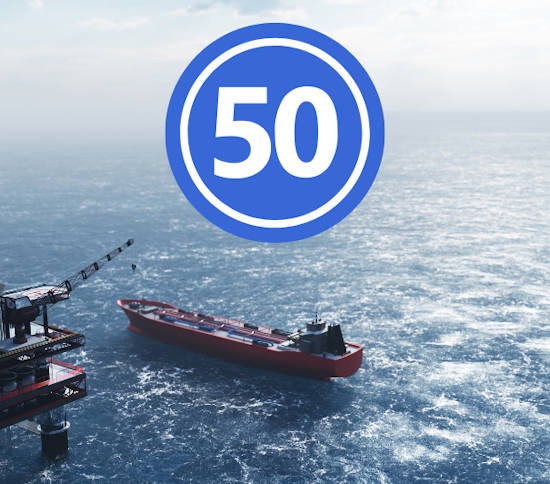
Embarking on the journey to purchase a used Offshore Supply Vessel (OSV) is both an exciting opportunity and a formidable challenge. With the maritime industry’s complexities and the critical role that OSVs play in offshore operations, selecting the right vessel is paramount to ensuring operational efficiency, safety, and regulatory compliance. This comprehensive guide is designed to navigate the intricate process, providing a detailed checklist of considerations that span technical specifications, legal compliance, operational capabilities, and financial implications. Whether you’re a seasoned maritime professional or new to the industry, these insights will equip you with the knowledge needed to make an informed decision, ensuring your investment aligns with your operational objectives and long-term business strategies. Let’s dive into the essential aspects to consider, ensuring your venture into the used OSV market is as smooth and successful as possible.
- History and Documentation: Start with the basics. Check the vessel’s paperwork thoroughly. This includes previous ownership, service logs, and any incidents or significant repairs. It’s like checking a car’s history before buying; you want to know where it’s been and what it’s been through.
- Physical Condition: Take a deep dive into the vessel’s current state. Look for signs of wear and tear, rust, and overall maintenance. Pay close attention to the hull, propellers, and engine condition. If you can, get a professional surveyor to give it a thorough check.
- Engine and Machinery: The heart of the vessel lies in its engine and machinery. Check for any signs of malfunction, unusual noises, or leaks. The condition of the engine can tell you a lot about how well the vessel has been maintained.
- Electronics and Navigation Equipment: Ensure that all electronics and navigation systems are up to date and in good working condition. This includes radar, GPS, communication devices, and autopilot systems. These are crucial for the safe operation of the vessel.
- Safety Equipment: Safety first! Make sure all safety equipment is present, in date, and meets the regulatory requirements. This includes life rafts, fire extinguishers, life jackets, and emergency beacons.
- Compliance and Certification: Verify that the vessel is compliant with the latest maritime regulations and has all the necessary certifications. This can include class certificates, safety management certificates, and pollution prevention certificates.
- Performance and Fuel Efficiency: Understand the vessel’s performance capabilities and fuel efficiency. This will have a direct impact on the operational costs. It’s a good idea to ask for records of fuel consumption under different conditions.
- Accommodation and Living Quarters: If the vessel has living quarters, inspect their condition and suitability for crew needs. Comfort and functionality should be balanced for long stints at sea.
- Storage and Cargo Capacity: Evaluate the storage and cargo capacity to ensure it meets your needs. Check the deck space, cargo handling systems, and any special requirements your operations might have.
- Price and Value for Money: Last but not least, consider the price in relation to the vessel’s condition, age, and operational capabilities. It’s important to ensure you’re getting good value for your investment. Consider future maintenance costs and the vessel’s potential resale value.
- Dry Docking Records: Look into the vessel’s dry docking history. Regular dry docking for maintenance and inspection is a good sign of a well-maintained vessel. These records can also highlight any recurring issues or significant overhauls.
- Operational History: Understanding how the vessel was used in the past can give insights into potential wear and tear or specialized modifications. A vessel primarily used in harsh conditions might require a more thorough inspection.
- Spare Parts Availability: Check the availability of spare parts for the vessel’s main systems. Having readily available spare parts can significantly reduce downtime during repairs and maintenance.
- Inspection and Survey Reports: Review any recent inspection and survey reports. These documents can provide an unbiased view of the vessel’s condition and highlight areas that may need attention.
- Crew Feedback: If possible, get feedback from the crew or operators who have worked on the vessel. They can offer practical insights into the vessel’s performance, quirks, and maintenance needs that might not be apparent from logs and records.
- Insurance and Liability: Investigate the insurance history and any liability issues the vessel might have. Knowing the insurance status and any claims can help assess risks and potential costs.
- Environmental Compliance: Make sure the vessel meets current and upcoming environmental regulations. Compliance with emissions and waste disposal standards is not only a legal requirement but also a responsibility towards sustainable operations.
- Technology Upgrades: Evaluate the need and potential for technology upgrades. Modernizing older vessels with new technology can enhance efficiency, safety, and compliance but can also be costly.
- Market Demand and Resale Value: Consider the current market demand for the type of vessel and its potential resale value. Understanding market trends can help you make a more informed investment decision.
- Personal Inspection and Gut Feeling: Finally, never underestimate the value of a personal inspection and your gut feeling. Seeing the vessel in person and getting a feel for its condition and how well it’s been cared for can be incredibly telling. Trust your instincts along with your research.
- Vendor Reputation: Research the seller’s reputation in the maritime industry. A reputable vendor with a track record of transparency and quality can significantly reduce the risk of unforeseen issues.
- Contractual Agreements: Pay close attention to the details in the purchase agreement. Ensure all warranties, responsibilities, and conditions are clearly outlined and understood. Legal advice might be beneficial here.
- Surveyor Expertise: When hiring a surveyor for an inspection, ensure they have specific experience with OSVs. Their specialized knowledge can make a huge difference in identifying potential issues.
- Fuel and Operational Costs: Beyond the purchase price, consider the ongoing operational costs, including fuel consumption, crew salaries, maintenance, and insurance. Estimate the total cost of ownership to ensure it fits within your budget.
- Future Regulations: Stay informed about future maritime regulations that could affect your vessel. Changes in safety, environmental standards, or technology requirements could necessitate expensive upgrades.
- Technology Compatibility: If you’re planning to integrate new technology systems, verify their compatibility with the existing vessel infrastructure. This can include navigation, communication, and operational technologies.
- Training and Crew Competency: Consider the training needs and competency levels required for your crew to operate the vessel effectively. Specialized vessels may require additional training or certifications.
- Operational Purpose Fit: Ensure the vessel’s specifications and capabilities closely align with your operational needs. Whether it’s supply delivery, crew transport, or specialized services, the vessel should suit the purpose it’s intended for.
- Financing Options: Explore different financing options and their implications. Loans, leasing, or other financing methods come with varying terms and conditions that can impact your business financially.
- Post-Purchase Support: Investigate the level of post-purchase support offered by the seller or manufacturer, including technical assistance, parts supply, and service networks. Good support can greatly enhance the vessel’s operational lifespan.
- Insurability: Before committing, check how insurable the vessel is. Older or vessels with a complex history may have higher premiums or might be difficult to insure under favorable terms.
- Redeployment Costs: If the vessel needs to be moved to a different operating area, consider the costs and logistics involved in redeployment. This includes fuel, crew, and potential canal or port fees.
- Docking and Berthing Fees: Understand the costs associated with docking and berthing in your intended operating areas. These fees can vary widely and significantly impact operational budgets.
- Spare Parts Inventory: Assess the inventory of spare parts that comes with the vessel. A comprehensive stock of critical spares can reduce downtime and save costs in the event of machinery failure.
- Technology Retrofit Potential: Evaluate the vessel’s potential for retrofitting with new technologies, not just for compliance, but for operational efficiency and environmental performance improvements.
- Charter History: If the vessel was previously chartered, look into the terms and performance under those charters. This can give insights into its reliability, performance, and any recurring issues.
- Environmental Footprint: Assess the vessel’s environmental footprint, including fuel efficiency and emissions. Vessels with a smaller environmental impact may be more favorable for future regulations and operational costs.
- Vessel Modification Records: Investigate any modifications or upgrades made to the vessel. Properly documented and executed modifications can add value, but poorly done alterations can lead to problems.
- Crew Accommodations and Facilities: Quality of life onboard affects crew performance and retention. Check the condition and adequacy of crew spaces, galley, and recreational facilities.
- Regulatory Advisory Services: Some sellers or brokers offer advisory services to help navigate the complex regulatory landscape. Such services can be valuable in ensuring compliance and operational readiness post-purchase.
- Decommissioning Potential: Consider the end-of-life plan for the vessel. Understanding the costs and options for decommissioning can be crucial, especially for older vessels nearing the end of their operational life.
- Network and Communication Systems: Evaluate the vessel’s current network and communication systems for compatibility with modern standards. Efficient communication is vital for operational coordination and safety.
- Ice Class Certification: If operating in cold climates, check for Ice Class certification, which indicates the vessel’s capability to navigate through ice-covered waters. This is crucial for ensuring safety and operational capabilities in such environments.
- Dynamic Positioning System: For vessels requiring precise positioning, assess the capability and condition of the Dynamic Positioning (DP) system. DP systems are essential for operations near offshore installations and in deepwater environments.
- Rescue and Recovery Equipment: Ensure the vessel is equipped with adequate rescue and recovery equipment, especially if it’s intended to operate in remote or harsh environments. This equipment is vital for the safety of the crew and the protection of the marine environment.
- Ballast Water Treatment System: With strict regulations on ballast water to prevent the spread of invasive species, ensure the vessel has a compliant ballast water treatment system in place.
- Fuel Type and Consumption: Consider the type of fuel the vessel uses and its consumption rates. With the maritime industry moving towards more sustainable options, understanding the implications for future operations is essential.
- Helideck Certification: If the vessel is equipped with a helideck, verify its certification and condition. A certified helideck adds operational flexibility, especially for medical emergencies or crew changes in offshore locations.
- Underwater Inspection Records: Review any available records of underwater inspections for insights into the hull’s condition and any underwater equipment. Frequent or recent inspections can indicate good maintenance practices.
- Market Analysis and Residual Value: Finally, conduct a thorough market analysis to understand the vessel’s residual value and demand in the secondary market. This analysis can help estimate the potential return on investment and exit strategies.
Purchasing a used Offshore Supply Vessel is a significant decision that requires careful consideration of many factors. From the vessel’s technical specifications and condition to its compliance with regulations and potential for future upgrades, each aspect plays a crucial role in determining its suitability for your operations. By taking the time to thoroughly evaluate these 50 considerations, you can make a more informed decision, ensuring that your investment not only meets your current needs but also positions you for success in the dynamic and challenging maritime industry. Remember, the key to a wise purchase lies in diligent research, expert advice, and a forward-thinking approach.


